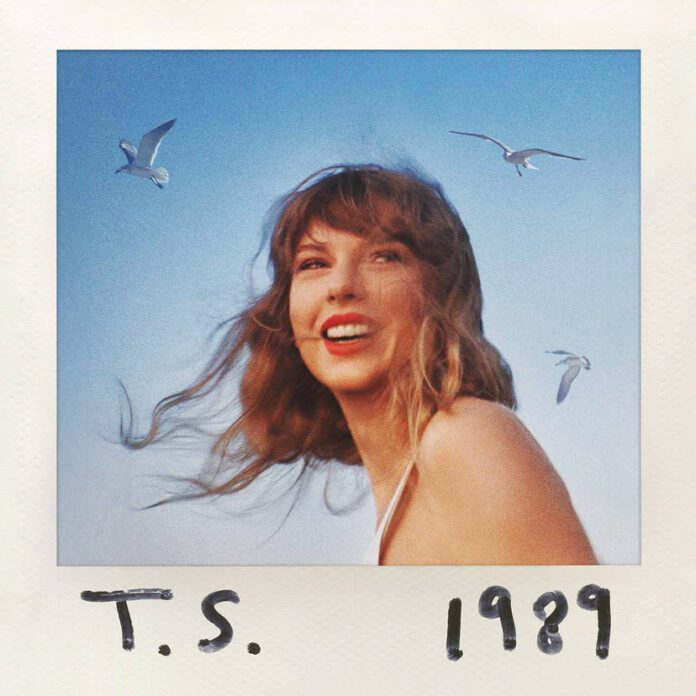
On Oct. 27 at 12 a.m. E.T., Taylor Swift released her much anticipated “1989 (Taylor’s Version).” The original “1989” was recorded and released nine years ago in 2014 through Big Machine Records, who own all her old masters. Swift has been re-recording her back catalog with Universal Public Records, now with full ownership. “1989” topped charts in its initial release, becoming the best-selling album after Adele in 2015.
When producing a song, post-recording processes begin editing the individual tracks. With an album where the focus is the vocalist, the vocal tracks are edited first. The equalizer brings the loudest volume to the level of the quietest volume, which allows the sound to remain uniform in volume, while maintaining softer characteristics of quiet sections. The compressor alters the waveform, rather than the volume. Vocals often have unwanted or “ugly” frequencies.
Using a compressor eliminates these frequencies, smoothing air or strain. It brings back boldness, adds richness and mutes breathy sounds. Then, instruments are processed, ensuring they match the tone of the vocals. Finally, all tracks are “bounced,” or combined into one. Mastering requires making edits to the track containing all the instruments, vocals and edits. This process edits all these waveforms together as one.
“1989” was dubbed Swift’s debut into pop, and the sound reflects that. A young singer, new to the genre, Swift’s vocals are strained. She’s not fully confident in her voice. Editing the original “1989,” smoothing vocals would have compressed the waveforms. Cleaning any strain, air or ugly frequencies probably muted and shrank the vocals. The instruments were then processed to match. This gives the whole album a very processed sound.
By “1989 (TV),” nine years have passed, and Swift has grown as an artist and a vocalist. She’s more comfortable in her voice and genre. Her new skill brings more body and richness to her songs. Editing for “1989 (TV)” vocals was minimal. Swift no longer needs the level of processing required for the original “1989.”
As instruments can now keep their true sound and tone, the whole album has a fuller, more natural sound. This offers a more classic tone, almost akin to recording the album live. Some even go so far as to say Swift is branching into rock. I wouldn’t say that, but I do think the production and skill of “1989 (TV)” is a great improvement.
Tracks “From the Vault,” supposedly cut from the original album, vary greatly from the original “1989.” Only “Slut!” seems to mesh perfectly with the album. Its lyrics, rhyming pattern and music all fit. While most expected it to follow the lyrical themes of “Blank Space,” “Slut!” rather talks about hiding a new relationship from the media.
Other songs, however, do not add themselves so neatly to the collection. “Is It Over Now?” fits lyrically. It has a clear chorus and verse, rhymes neatly, and the chorus comes across as somewhat repetitive. It’s clear Swift at least wrote the lyrics in the “1989” era, but that’s where the similarities end.
From the opening, this song is far more electronic and synth-heavy, like the album “Midnights.” This isn’t the only vault song to echo “Midnights.” “Say Don’t Go” follows Swift’s newer style both lyrically and musically. Where “1989” has shorter lines, cleaner breaks and more rhyming, “Midnights” has run-on phrases and sections stuffed with words. “Say Don’t Go” uses that lyrical style. Finally, the base of the song is reminiscent of “Bejeweled.”
“Suburban Legends” feels as if it belongs to the “folklore” or “evermore” era. The melody is more indie-influenced; the message and the lyrics are more whimsical. Swift had said that with “evermore” and “folklore,” she wrote songs to tell stories, not about her own life. “Suburban Legends” seems more like this narrative songwriting rather than the emotional punchiness of Swift’s younger years.
Since “1989,” Swift’s songwriting and messages have changed. In “1989,” she’s just beginning to argue against the media-painted picture of her. Now, Swift controls her image. She’s taken ownership of her music, thrown off dramas and “beefs” and grown into a mature adult with a powerful voice rather than a young woman fighting to be heard, but unsure of what she wants to say. Swift’s later songs matured with her.
Overall, “1989 (TV)” is more pleasing to listen to; it fits Swift better vocally and musically, but thematically and lyrically it no longer fits the woman and artist Swift has become. Given a choice between “1989” and “1989 (TV),” I would choose “1989 (TV)” for the better quality. But between “1989” and Swift’s newer albums, I prefer her newer albums for their messages and stories.